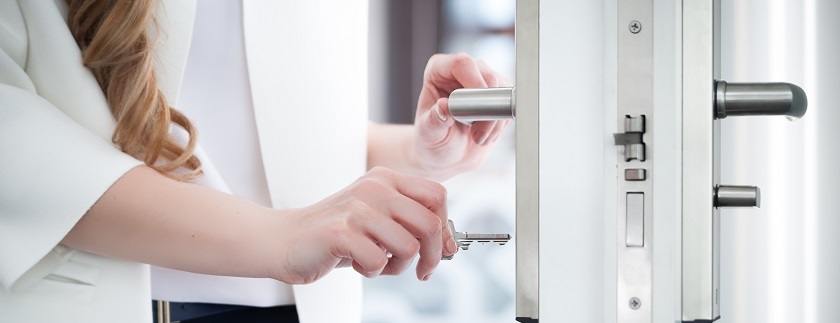There is some basic ironmongery that adorns a door, making it functional. But the choices of ‘door furniture’ can seem endless, with many variants of handles, hinges, catches, closers and more. Here’s a basic guide to door furniture.
General rules for choosing door furniture
When deciding which items to use for the door, ensure that it is in proportion with the door. You should also ensure that there are sufficient hinges depending on if the door is interior or exterior. Exterior doors also need more durable fittings, as well as some consideration for security.
Latches
A door can be secured with either a latch, or a catch. Latches move an internal mechanism whereas catches are categorised as a simpler mechanism such as a simple recess, magnet or hook.
Latches are normally found in handles or mortice knobs that turns a mechanism that slides into the edge of the door and retracts with the turning of the handle/knob. Latch handles normally come with spindle bars which operates the latch mechanism, latch kits come with the full latch mechanism, handles and fixings.
Knobs
Some doorknobs have a spindle to operate the latch mechanism, others are more decorative and allow the door to simply be pulled open. A huge variety is available in many different style including wood, brass, stainless steel, chromed and more.
Handles
‘Handles’ is the generic term of a shape of door furniture that can be pulled primarily, something you can grip. Whilst some operate latches, other pull handles can be placed on doors in the same way that simple knobs are placed, to simply open and close the door. There are even more variants of door handle design, and choosing one depends on the style and function of your door.
Lock handles
Lock handles are to be used with latch mechanisms, as they leave a gap to insert a key to operate the lever lock. The lock itself is normally a separate mechanism so that you can replace the handles to suit your rooms style without the need to replace the whole lock mechanism.
Hinges
Butt hinges are the most common form of hinge, with the best quality being brass and stainless steel. Some have extra features such as washers and ball bearings. Take a look at our guide to hinges for more info on the different types of hinges that are available.
Catches
Catches are either screwed directly to the door and door lining, or they may need recessing. Often found used on cupboard and wardrobe doors, the main types are magnetic, ball and roller. Magnetic catches are often used on glass or plastic, ball catches (or bales catches) are often used on cupboard doors where the ball pushes into the strike plate. Roller catches are a quieter alternative to magnetic catches.
Door closers
There are two main types of door closer – a hydraulic closer which is surface-mounted on and above the door, and a concealed closer, which is fitted on the hinge edge of the door. These are often found on fire doors. Hydraulic types are better for heavier doors.
Letterboxes
Designed to allow post to be pushed into the door, letterboxes can be made in a range of materials and in different styles. The most popular have draught excluders and flaps on the front for security and insulation.
Door knockers
An alternative to a door bell, a door knocker will use a handle to strike the door or a plate to make a loud knocking noise! They can look stylish and be designed in keeping with the house style such as Victorian or Georgian.
Other door furniture
There are other types of door furniture available, which may fit your exact needs. Options such as cylinder pulls, keyhole escutcheons, door studs and finger plates. Take a look at our huge door furniture range here.



